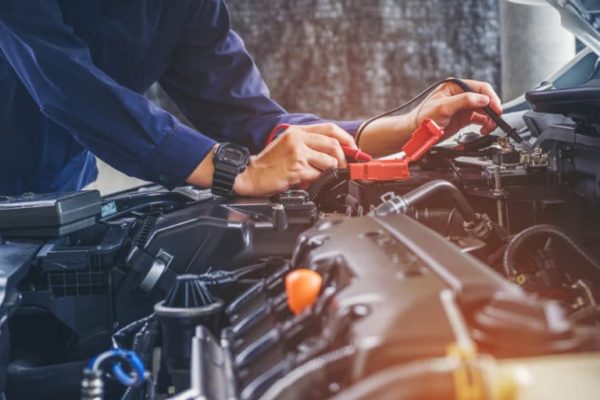Here at Custom Sticker Shop, we love cars. There are few better possessions for expressing yourself however you want to. But you need to keep your vehicle in good shape. A car that has been submerged in water for any amount of time is likely to have suffered severe damage. If your car has been submerged in flood waters, the following steps may prove helpful at reviving the vehicle.
Contact Your Insurance Company
A call to your insurance company should be made regardless of the perceived damage to the car. When the flooding is caused by a major weather event, it is likely that your insurance company will be overloaded with calls and claims. For this reason, you should seek to file your claim as early as possible.
Read More: PolicyGenius | Does Car Insurance Cover Flood Damage?
Do Not Crank the Engine
Do not turn your car on until you are sure it is completely dry. Any attempt to crank the engine while water is inside of it may result in more damage. In the meantime, there are other actions that may help to revive your car while waiting for it to dry.
Source: Thoughtco.com | What to Do if Your Car is in a Flood
Find the Water Line
It is important to know just how far underwater the car was submerged. The mud and debris in the water will usually leave a visible line that will indicate how high the water reached in the car. Insurance companies will usually consider a car totaled if water has reached the bottom of the dashboard. Take pictures of the water line in case you need to provide proof to your insurance company.
Dry the Interior
Water lines are only effective at determining how far the vehicle was submerged underwater. The water line will not indicate how high surges in water levels may have reached. This means that engine parts and the car’s interior may have gotten wet even if the water line rests beneath these parts.
It will take quick action to prevent mold from forming in a car that has been flooded. Begin by opening all windows and doors to the car. Towels can then be used to soak water from the floor. Keep in mind that this is only a temporary fix to prevent mold. Interior items that are soaked will have to be replaced.
Relevant: The Clunker Junker | Was Your Vehicle Flooded? Here’s What to Do
Check Oil and Air
An oil level higher than normal is a sign that water is present. When this happens, you should make no attempt to start the vehicle. The same is true if there is evidence of water in the air filter. You can attempt to change the oil and air filter yourself if you’re familiar with the process. However, it may be better to have the vehicle towed to a mechanic.
Electrical Systems
It is now time to crank the vehicle’s engine. Once the car is started, everything powered by electricity in the car should be checked. This list includes turn signals, headlights, the air conditioner, windows, power locks, and all other electrical components of the car.
Source: European Service Center | Malfunctions in Car’s Electrical Systems
Pay Attention to the Exterior
If the flooding is minimal and your car was not completely submerged, then it’s likely that you’ll be able to revive your vehicle. Beyond drying and cleaning the interior, you should also pay special attention to the exterior of your car. Salt water can be corrosive to metal, which means that you should take measures to protect and preserve your car’s paint. You can also take steps to make your car look new again by replacing certain exterior features, such as the grille, car decals, and lights. You may even be able to find exterior features that are better than the originals.
Source: Empyre Off-Road | Which Grille Is Right for Your Toyota Tacoma?
Immersion in water will often cause serious damage to a car. In some cases, it can be revived with quick thinking and a bit of automotive knowledge. The seven tips above provide an excellent guide for reviving your car if it’s ever affected by heavy flooding.

